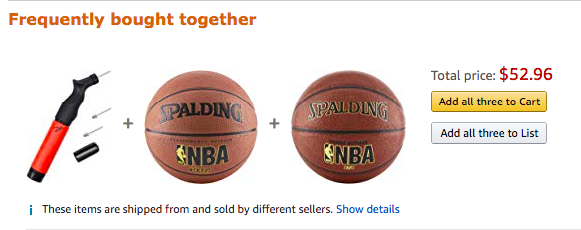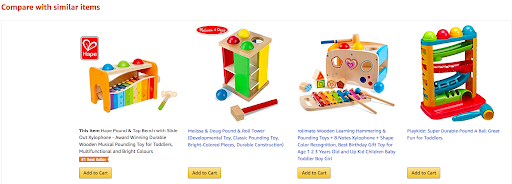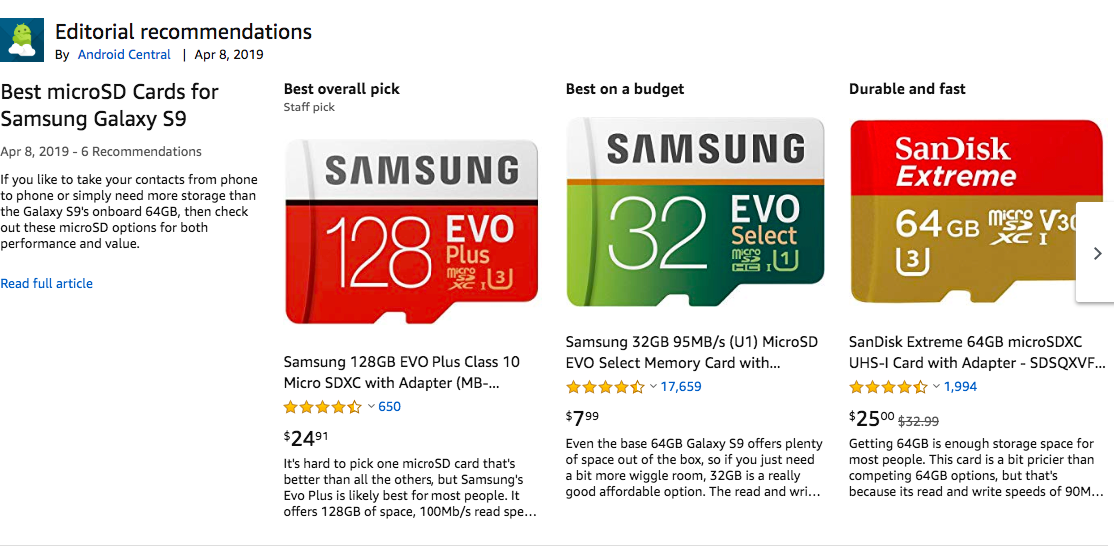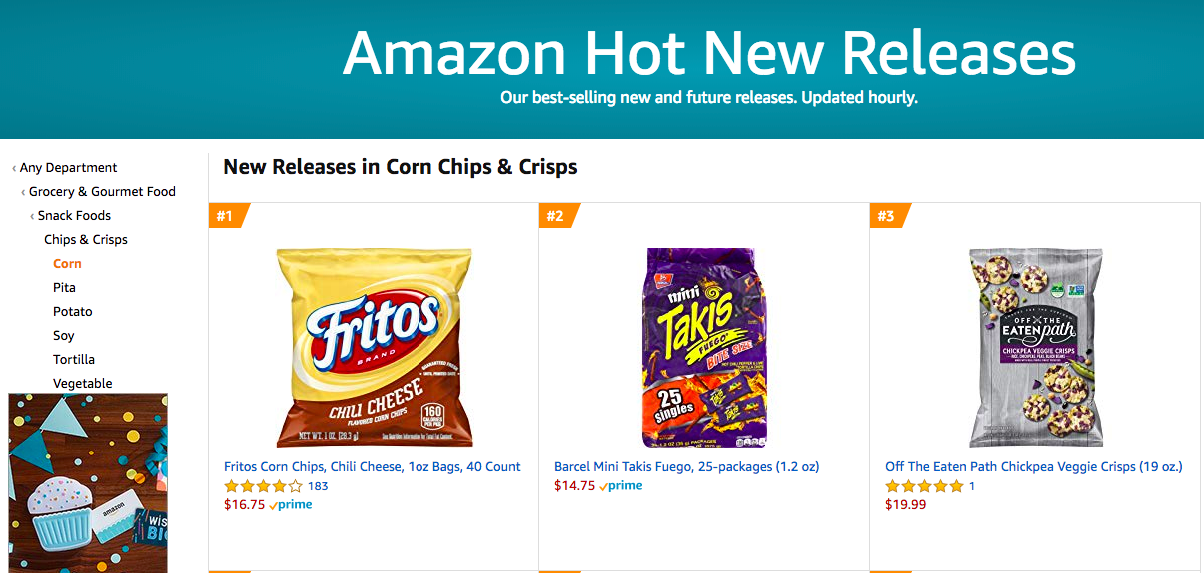It’s been six months since Amazon released the new Product Targeting feature. It was a huge update that enabled many more opportunities for brands to increase their product awareness and overall sales.
Placing ads on competitors’ product pages and having an option to adjust bids for every Amazon Standard Identification Number (ASIN) separately makes the Amazon Marketplace more and more competitive.
Moreover, brands are now able to position their products in the mind of customers more directly than before. This can definitely drive business growth.
However, it is important to keep in mind that what matters is not the quantity of products that you’ll target, but rather their quality. We’ve had plenty of time to test different approaches, and we’ll share our experience with you in detail.
We’ll give you the best list of sources, from which you can identify products for targeting. The better the list for targeting that you create, the greater your chances of having a higher return on investment.
When Did This Change Happen?
Amazon released the new Product Targeting feature for Sponsored Products ads in the middle of Q4 of 2018. It’s a huge change because it helps increase brand visibility by allowing advertisers to target specific product pages they want to advertise on. Furthermore, it allows them to optimize their ads in a more detailed way.
This feature is a game changer for everyone selling through Seller Central. Before this update, sellers were only able to use an automatic or a keyword-based option for targeting.
If you take a look at the Amazon Marketing Service (AMS) platform for vendors, you’ll see they have Product Display Ads as an option to target specific products. But Product Targeting actually gives us a more sophisticated way of optimizing on an ASIN level.
With AMS Product Display Ads, you can adjust bids only on a campaign level, while with the Sponsored Product targeting feature, you can adjust bids for every targeted ASIN separately.
Before we see the best sources you can use to find the right products for advertising, it’s important to briefly explain the targeting options available.

Increase Brand Awareness for Your Products
If your goal is to increase the visibility of your products and to gain more awareness, the Product Targeting feature can help you a lot. You can use it in two different ways.
One way is to make a list of your best-selling items and start boosting them more. For products that already have a great conversion rate, the Product Targeting feature could bring you a greater chance of increasing sales. It’s always profitable to invest in products that have a great return on investment.
The second option is like a product launch. If you want to make a progressive start with your new product, the Product Targeting campaign could help you with that.
Perform market research to find the most popular brands, and then target them at the very beginning. This way, you’ll be able to reach shoppers who didn’t even know about your product at the beginning of its life cycle.
Step Into a Competitor’s Market Space
By targeting competitors, you are able to show your product on their product listing and steal shoppers from them.
Of course, as we saw earlier, it would be best for you to target products that have a higher price and a lower star rating than your own products. With this approach, shoppers have more reasons to buy your product, as you’re giving them an obviously better offer.
But sometimes, if you don’t want to only play it safe, you can use a more aggressive approach and target top sellers in your category.
Yes, they have more sales than your product, they have a better star rating, and they could even have a lower price than your product. Still, you can do this as a test and see how shoppers will behave.
You can set low bids and a low daily budget and give it a shot. Maybe they will find your product more appropriate for their needs. Sometimes, risk can pay off.
Remember, however, that just as you might be planning to attack your competitors, they are also going to take advantage of the Product Targeting campaigns. This means that they, too, will try to place their products on your product listing.
Prevent anyone from taking your shoppers away. Make sure you’re targeting your own ASINs so you can defend as much space as possible in your product listings.
The Creation Process of Product Targeting Ads on Amazon
The actual name of this new feature is Product targeting (BETA), and after almost six months, it is still in beta phase. It allows you to choose specific products, categories, brands, or other product features that are similar to the product in your ad.
By using this advertising approach, you can help shoppers find your products when browsing detail pages and categories, or when searching for products on Amazon.

In other words, the Product Targeting feature gives you an opportunity to place your ad on a competitor’s product listing pages as well as in the category search results.
After you choose the Product Targeting option, you’ll be taken to the next step, where you can choose between targeting Categories or Individual Products.

After testing both these options for the last six months, we’ve concluded that targeting individual products is more profitable compared to targeting categories, so let’s talk about the former first.
How to Set Up Campaigns Targeting Individual Products
There are three different ways to add individual products to a campaign:
- Add auto-suggested products based on products in your ad.
- Search for a product by typing the product name, ASIN, or SKU.
- Enter a list of products.

The main question is which ASINs you should focus on using this targeting feature in the most effective way.
Of course, there are some competitors that you can pull from your pocket right away, but what about after that?
Here are some clever ways to discover relevant products to target with this feature.
Follow the Purchasing Path of the Potential Shoppers
Look for converted ASINs from the Search Term Report (found by navigating to Advertising Reports, then Sponsored Products Reports, then Search Term Report). If you filter the Search Term Report, you will find numerous ASINs in the search term column. Use them to understand what shoppers are looking for when they find your product.
Filter this list, find the most appropriate ASINs, and target them. Next time, when shoppers start a search for the same competitor’s products, your product will be shown in their product listing.

Learn Who Your True Competitors Are
Find out who competes with each of your products by reviewing the first rail of products, right after the image and description. That first rail is called “Sponsored products related to this item.”
This is the place where Amazon positions all the Product Targeting ads. Keep in mind that Amazon will always serve the most relevant ads that have a high chance to convert. Use this list of Amazon’s suggestions, and target those products right back.

Win Shoppers Who Are Loyal to a Competitor’s Brand
Another good way to discover where you should place your ad is to look at the list called “Customers also shopped for” placed right under the “Sponsored products related to this item” on the product pages.
Amazon gives you a list of products with a good conversion rate for the same search term. It’s good to place an ad where conversions occur.

Offer Your Product Even Before Shoppers Start Searching for It
Sometimes, shoppers make similar decisions when they buy a few more complementary products along with yours.
Amazon provides that information in some cases, and this feature is called “Frequently bought together.” What you don’t know is which product the shopper bought first.
This is why you should take one step forward and place your ad on “frequently bought together” product pages.

Position Your Product in the Mind of a Shopper
Buyers’ journeys sometimes may take longer—with a lot of research, comparison, and reconsideration. This is how Amazon sometimes gives us the list called “Customers who viewed this item also viewed.”
This list shows us that these products have also been considered for purchase. By placing your ad on product pages from this list, you’ll have a higher chance of getting your product in front of a shopper, increasing the chance that they’ll come back and buy your product.

Use Amazon’s Comparison List
When shoppers perform their research and finally go to a product listing page, Amazon will provide them with a comparison list of the most suitable products for their needs.
This list is called “Compare with similar items.” These products are highly relevant and excellent choices for product targeting.

Sneak Into Listing Pages for Highly Ranked Products
By simply typing in Amazon’s search bar one of the nonbranded keywords that are closely related to your product, you’ll get the list of products that have the best rank position. For example, if you’re advertising high-end tweezers from Tweezerman, you might use a generic search term “stainless steel facial tweezers”.
The truth is that most shoppers only buy products that are listed on the first page. That’s why it’s important for you to target products that have a higher rank position.
Competitors You Can’t Stop Thinking About
Most sellers perhaps have their own list of competitors they can’t stop thinking about. How much do they sell? Do they have loyal, returning customers? How did they get so many reviews?
Yes, you know what I’m talking about. But don’t just think about them! Target them ASAP, and try to take a piece of the pie from them. Being close to your category’s top players means playing a big game.
ESTABLISH YOUR EXPERTISE WITH THE CHOSEN PRODUCT LISTINGS
For some categories, Amazon provides an Expert, or “Editorial recommendations,” list of products. These products are picked as the best option for a specific keyword. Don’t miss the chance to place your products in their listings too.

Follow Trends in the Category
Category movement is like a wave; there are always new products that are coming to disturb a calm sea.
Sometimes, new products are much more interesting than the old ones. Amazon finds those that are new and popular and marks them with the “Hot New Release” badge.
This badge tells you that, although these products have been on the market for a short time, they are selling really well. Follow the trends of your category, and advertise your products right next to the “hot” ones.

In Case You’re out of New Ideas
The list of targeted products can be as long as you want. But sometimes you can get the feeling that you tried all possible solutions.
Don’t give up! Check which are the Best Sellers in a category where you’re selling your products, and target them. If these are the most popular products, you absolutely want to be part of that crew or at least close to them.

Setting Up Campaigns that Target Categories

In most cases, Amazon will suggest the categories where your product is located. Those should be the first to target. If you want to expand the list of categories, you can search for categories that are closely related or complementary to your product.
Consider using a low starting bid, since this type of targeting can increase your PPC spending without an appropriate return on investment.
Approaches to Use for Category Refinements
The Brand Targeting feature enables you to directly target a brand. These will probably be your competitors that sell similar products as you. To find this option, click on “Refine,” and pick a brand you consider appropriate to target.

The tricky part of this feature is that brands can have a lot of different products in their portfolio. By targeting some brands, you can’t control under which product your ad will be shown, and so you have to rely on Amazon choosing the best option for you.
You can also do subtle refinements by choosing products with a higher price or a lower star rating compared to your product. This way, a shopper will have more incentives to buy your product.

Which ASINs Should Be Added as Negative Targets
When you start testing your Product Targeting campaigns, you’ll notice that some ASINs or some specific brands only increase your advertising spending, without any sales.
You can consider adding those ASINs/brands to the negative targets list, to avoid wasting your money.

To find out which ASINs only increase your spending, first analyze your Search Term Report. Then, filter out a list of underperforming ASINs for which you don’t want your ad to show up. Exclude these products as “Negative ASINS,” and block all traffic for them leading to your campaign.

How to Adjust Bids for Better Performance
There are two different ways you can use to make bid adjustments so that you can achieve better performance. You can do that by:
- adjusting bids separately for every ASIN or category that you targeted in a campaign
- making bid adjustment for Placement that is related to the Product Pages
For every Product Targeting campaign, you have the ability to adjust bids on the lowest level for every single ASIN or category that is targeted.
This is very useful, as with a daily check, you can make sure that bids for underperforming targeting options are decreased or even paused. Conversely, for those performing well, you can consider increasing the bids to grow sales.

Furthermore, every Sponsored Product campaign has a bid adjustment option for the various places where your ad can be shown.
So, regardless of whether your Sponsored Product Campaign uses an automatic, a keyword, or a product targeting option, you can adjust different bids for “Top of the search (first page)” or “Product pages” placement.
From the screenshot below, “Product pages” placement is increased by 200%. This means that we’re giving approval to Amazon to raise bids for all targeting options in this campaign, up to 200%.
This way, we can win the ad placement before other brands also bidding for the same targeting option.

In other words, here you can set how much you would allow Amazon to increase your bid so that you could win the bidding competition, allowing your ad to show on the competitor’s product pages.
The Power of the Product Targeting Feature
There should be no question whether you should utilize the Product Targeting feature or not. If you want to stay in the game, you need to follow the innovations that we will arguably see more often on Amazon.
The Product Targeting feature is a great update, and it offers every brand new ways to grow their business. In accounts that we’re managing here on Bobsled Marketing, we’re seeing great results.
Take advantage of the detailed list of sources in this post, pick the right products, and start your journey to becoming the most famous brand in your category. We wish you good luck and a lot of success!
Further Reading
Take Advantage of the “New-To-Brand” Metrics to Optimize Your Paid Marketing Strategy

